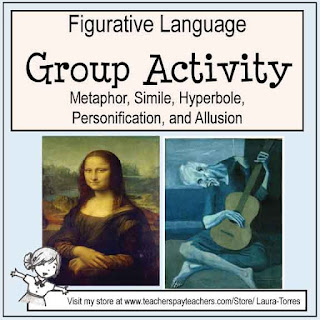I am a fan of the English language and all the messy rules that go with it. I resist change. In formal writing, I do not begin my sentences with coordinating conjunctions. I do not press "send" until I have proofread my text messages. Yes, I am one of THOSE people. I am, however, on the bandwagon to standardize the singular use of the plural pronoun "they."
Using "they" as a singular pronoun is, by far, the most common mistake in student writing, but perhaps it should not be considered a mistake at all, rather a better option than the clunky and binary "he or she."
Lately in class, I find myself telling my students that they can use "they" as a singular if they do it purposefully and consistently. I add "purposefully and consistently" because I am wired to teach correct usage, and "they" as a singular is still not widely accepted, especially in formal, academic writing. I want them to be aware of this and understand that they are deviating from what might be acceptable in other classes. (I also want them to be aware of how they are using language in general and not just writing what sounds fine in conversation.)
Besides the obvious binary gender issue, which is important to many of my students, there is one big reason why "they" should be an acceptable singular: efficiency of language.
Consider this sentence:
Kelly or Brennan will organize the committee, but ? or ? will need help with the finances.
The names Kelly or Brennan are gender-neutral, but require a singular pronoun, according to the rules (if it were "Kelly and Brennan," then the plural "they" would be the correct pronoun), so what if the writer doesn't know whether "he" or "she" is appropriate? Consider the sentence, written according to the rules, even if the writer does know the genders:
Kelly or Brennan will organize the committee, but she or he will need help with the finances.
Clunky. It would be easy to make a case for the plural "they" here instead of the "she or he," or guessing the gendered pronouns (or the untenable "...but he/she or he/she...).
The stickler on my shoulder says, "There could be a misunderstanding! Someone might think Kelly and Brennan are working together!" Granted, the first part of the sentence is clear that one or the other will organize the committee, and the second half states that both of them will need help, but to me, the flow of the sentence with "they" trumps any confusion.
Also consider the most common situation where "they" would make sense:
If a student wishes to enroll after the deadline, he or she will need to take his or her petition to the academic counseling office.
There are a lot of extra words in that sentence and the flow is not good. Previously, if I saw this sentence in an essay written like this, "If a student wishes to enroll after the deadline, they will need to take their petitions to the academic counseling office," I would suggest changing "a student" to "students" rather than changing the pronoun "they" to "he or she" and "his or her." This is a cop-out, because it's simply a workaround to a greater problem. Now, I just let it be, because, frankly, the pronoun "they" works better.
It will be an uncomfortable shift for those of us who make our livings sussing out the small errors of the written language, but I suspect for almost everyone else, they will be surprised (if they give it any thought at all) that using "they" as a singular was ever incorrect.



















































